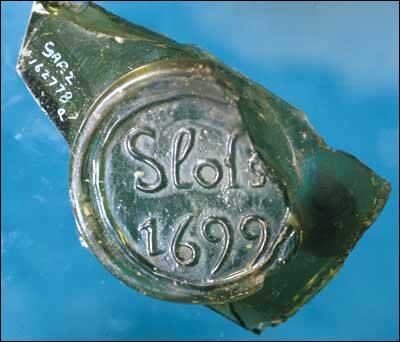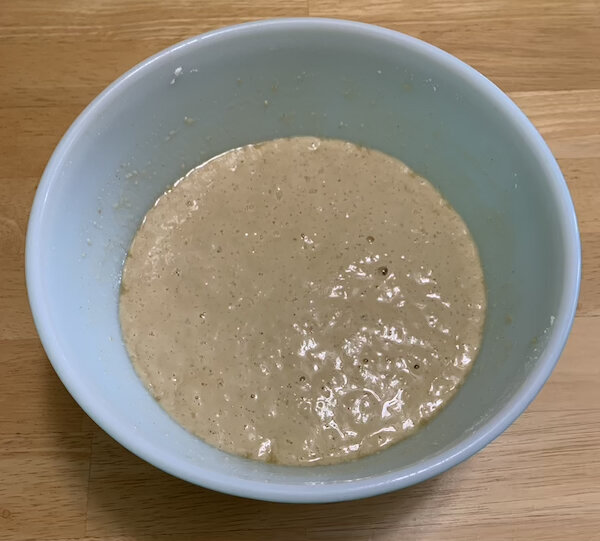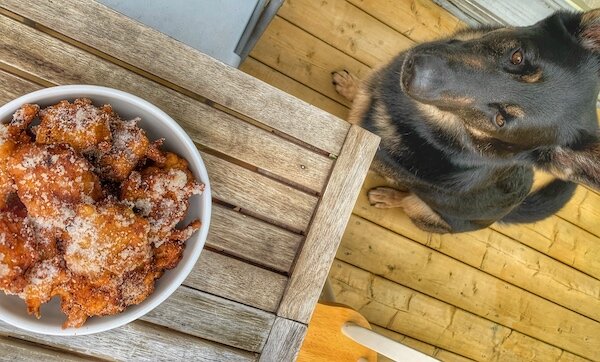Week 3 - To Make Fritters
Hey Cook Offers! Welcome back for Week 3 of the 2021 Great Colonial Cook Off. This week’s dish - Apple Fritters - is pretty much guaranteed to be a crowd pleaser. It comes from The Compleat Cook, Expertly Prescribing The Most Ready Wayes, Whether Italian, Spanish Or French, For Dressing Of Flesh And Fish, Ordering Of Sauces Or Making Of Pastry, by WM (1658) and goes like this:
To Make Fritters:
Take halfe a pint of Sack, a pint of Ale, some Ale-yeast, nine Eggs, yolks and whites, beat them very well, the Egg first, then altogether, put in some Ginger, and Salt, and fine flower, then let it stand an houre or two; then shred in the Apples; when you are ready to fry them, your suet must be all Beef-suet, or halfe Beef, and halfe Hoggs-suet tryed out of the leafe.
We’ve provided a modern step-by-step interpretation of this recipe below. But before we get to that, it’s time for our weekly dose of fascinating historical trivia.
What the heck is sack?
The first ingredient in this week’s recipe is “sack”. The term comes from the phrase vino de sacca, meaning wine set aside for export. Historically, it referred to a sweet, fortified wine, primarily from Spain or the Canary Islands, with a high alcoholic content. 17th century diarist Samuel Pepys likened it more to a spirit than a wine.
Trade in sack and other Spanish exports like olive oil and dried fruit, played a super important role in a triangular trade in which Mediterranean and Iberian ports imported Newfoundland cod and exported wine and fruit to English and Dutch ports, which in turn exported labour and supplies to Newfoundland. The vessels engaged in this trade were commonly referred to as sack ships.
Instructions dated 1634 to Thomas Bredcake, Master of a sack ship called Faith, describe one such voyage. The details are recounted in historian Peter Pope’s incredible book Fish into Wine: The Newfoundland Plantation in the Seventeenth Century and go like this:
Bredcake is instructed to “make all haste possible” to get to Newfoundland before the end of July. There, he was to load four thousand quintals (approximately 448,000 lbs!) of “good merchantable drie Newfoundland fish”. Once loaded, the Faith was not to delay, “but [to] sail directly, and to be there one of the first, to Catagena”. There, the cargo of fish would be sold and the ship reloaded with Spanish goods bound for London.
Some (in fact, a whole heckin’ lot!) of Spanish cargo made it back to Newfoundland. Regarding the export of Spanish wine, 17th century Canary Islands wine merchant John Paige noted:
Newfoundland is every year overlaid*, and, as I am informed, there goes from Madiera 100 pipes [460,000 liters] this year.
HOLY SACK!
*overlaid - blanketed, completed covered over-burdened
Getting back to our recipe….
Sack wine (at least in a strict 17th century sense) is no longer available. Medium-dry sherry is a close modern-day equivalent and should be fairly easy to find in most places. Feel free to substitute any sherry, madeira or port that you have on hand. If you’re going alcohol free, try mirin, shaoxing, or sauterne cooking wine, or red wine or balsamic vinegar sweetened with sugar.
A huge shoutout to Cook Off Insider Sharon Noel who doggedly stuck with this recipe until the results were just right. Way to go Sharon!
Recipe
Ingredients
3/4 cup (190 ml) dark ale (any beer will do in a pinch)
1/2 cup (125 ml) medium-dry sherry (see note below)
1 1/2 cups sifted all-purpose flour
1/2 teaspoon salt
1 teaspoon ground ginger (see note below)
1 teaspoon yeast
3 large eggs
3-4 medium apples, peeled and grated
vegetable oil for frying (of beef suet if you’re really gung-ho)
Cinnamon sugar for sprinkling
NOTES: Sack wine (at least in a strict 17th century sense) is no longer available. Broadly speaking, medium-dry sherry is a close modern-day equivalent and should be fairly easy to find in most places. Feel free to substitute any sherry, madeira or port that you have on hand. If you’re going alcohol free, try mirin, shaoxing, or sauterne cooking wine, or red wine or balsamic vinegar sweetened with sugar.
Although the original recipe calls for ginger only, feel free to use whatever combination of spices you like. FYI … Recipe texted Sharon tried cardamom and says while the result smelled great, the taste was subtle. Lesson learned? Be bold with your spicing!
Method
Combine the ale and sherry in a small saucepan set over medium-low heat. Warm slightly and set aside.
Whisk eggs until yolks and whites are combined
In a second bowl, whisk together the dry ingredients (flour, ginger, salt and yeast)
Add the eggs to the flour, and stir until well combined. The mixture will be dry and crumbly.
Gradually add the ale and sherry, blending in each addition well before adding the next. The end result will look like slightly lumpy pancake batter.
Cover and and let sit at room temperature for 1-2 hours OR refrigerate overnight.
Fold in the grated apples
Over medium heat, heat 2 to 3 inches of oil/lard in a deep frying pan or pot to 375°F. Use a thermometer to determine the correct temperature, or test by dropping a bit of the batter into the hot lard. If the oil/lard sizzles, it is hot enough to fry the fritters. Carefully drop tablespoons into the hot oil and fry for 3 to 5 minutes, turning once to lightly brown on both sides. Remove and drain well on paper towel or brown paper. Roll in cinnamon sugar while fritters are still hot.
From left to right: Mixed batter; After resting; Ready for tasting; Inside texture.








